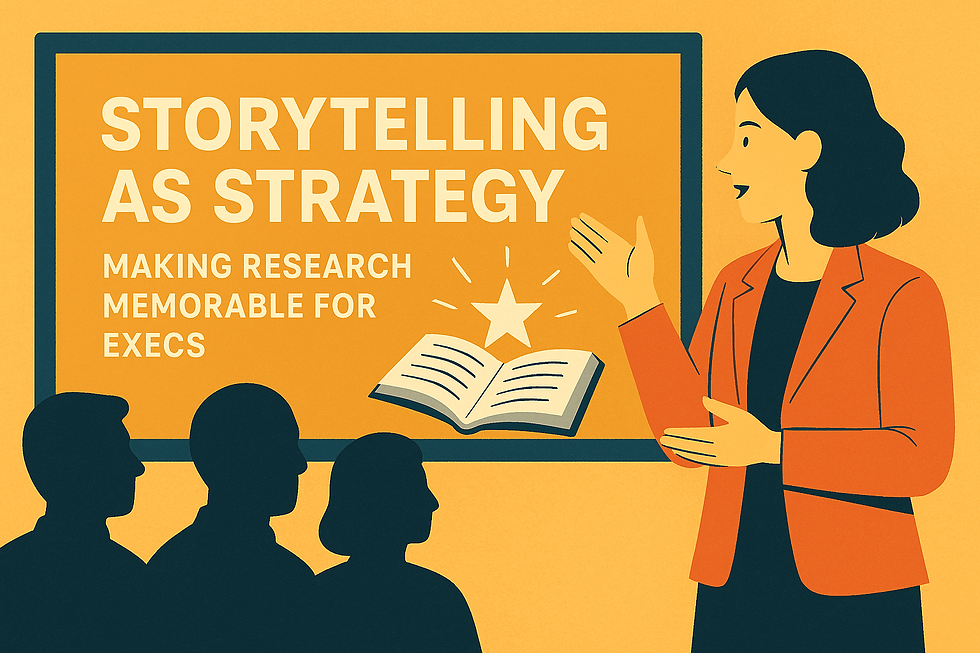The Evolution of Continuous UX Research: From Periodic Studies to Real-Time User Insights
- Philip Burgess
- Sep 30
- 3 min read
Updated: Oct 25
By Philip Burgess - UX Research Leader
The days of quarterly usability studies and annual user surveys are numbered. As product teams embrace agile methodologies and users expect increasingly personalized experiences, UX research is undergoing its own transformation—from periodic snapshots to continuous, embedded feedback loops.
This shift isn't just about speed—it's about fundamentally changing how research integrates with product development to create more responsive, user-centered experiences.
Why Traditional Research Cycles Are Breaking Down
Traditional research operates on a project-based model: identify a question, design a study, recruit participants, analyze findings, and present recommendations. This approach worked well when product releases happened quarterly or annually.

But today's reality is different:
Product teams ship features weekly or daily
User behavior shifts rapidly based on market conditions
Stakeholders need insights that inform immediate decisions
Competitive advantages emerge and disappear in months, not years
By the time a traditional research study is complete, the insights may already be outdated. Continuous research addresses this gap by embedding feedback mechanisms directly into the product experience.
What Continuous UX Research Actually Looks Like
Continuous research isn't about running more studies—it's about creating systems that capture user feedback as part of the natural product experience. This approach combines multiple touchpoints:
1. Embedded Feedback Loops
Micro-surveys, in-app feedback widgets, and contextual prompts that capture user sentiment at the moment of interaction. These tools provide immediate insights without disrupting the user experience.
2. Behavioral Analytics Integration
Real-time monitoring of user actions, drop-off points, and engagement patterns. When combined with qualitative feedback, behavioral data reveals not just what users do, but why they do it.
3. Always-On User Panels
Curated groups of engaged users who provide ongoing feedback through regular check-ins, prototype testing, and feature validation. This creates a direct line to user sentiment without the overhead of constant recruitment.
Building Your Continuous Research Infrastructure
Transitioning to continuous research requires both technological infrastructure and organizational change. Here's how to build a foundation that scales:
Start with Your Data Architecture
Continuous research generates massive amounts of data. Establish systems that can aggregate feedback from multiple sources, identify patterns automatically, and surface actionable insights to the right stakeholders at the right time.
Create Research Rituals
Build regular touchpoints where teams review continuous feedback: weekly insight reviews, monthly trend analysis, and quarterly strategic assessments. These rituals ensure insights translate into action.
Develop Rapid Response Protocols
When continuous feedback reveals critical issues, teams need clear processes for investigation and response. Define thresholds that trigger deeper research and establish workflows for rapid validation of potential solutions.
The Strategic Impact: Beyond Faster Feedback
Continuous research does more than accelerate feedback—it fundamentally changes how organizations understand and respond to user needs:
Proactive Problem Detection: Issues surface before they impact business metrics
Dynamic Personalization: Real-time insights enable adaptive user experiences
Competitive Intelligence: Continuous monitoring reveals market shifts as they happen
Strategic Agility: Organizations can pivot quickly based on emerging user needs
Common Pitfalls and How to Avoid Them
As organizations embrace continuous research, several challenges consistently emerge:
Data Overload: More feedback doesn't automatically mean better insights. Focus on signal over noise by establishing clear metrics and thresholds for action.
Reactivity Bias: Continuous feedback can create pressure to respond to every piece of input. Maintain strategic perspective by balancing immediate feedback with longer-term user needs.
Research Fatigue: Users can become overwhelmed by constant feedback requests. Design feedback mechanisms that feel natural and valuable to users, not burdensome.
The Future of Research Leadership
As continuous research becomes the norm, the role of research leaders evolves from study coordinators to insight orchestrators. Success requires:
Systems thinking to design feedback loops that scale
Data literacy to interpret patterns across multiple sources
Strategic communication to translate continuous insights into actionable recommendations
Change management skills to guide organizational transformation
Taking the First Step
Transitioning to continuous research doesn't require a complete overhaul overnight. Start with one product area or user journey. Implement basic feedback mechanisms, establish regular review cycles, and gradually expand as you learn what works for your organization.
The goal isn't to eliminate traditional research methods—it's to create a more responsive, integrated approach that serves both immediate tactical needs and long-term strategic vision.
✨ Continuous research isn't about doing more—it's about being more responsive to the humans we serve.
Philip Burgess | philipburgess.net | phil@philipburgess.net




Comments